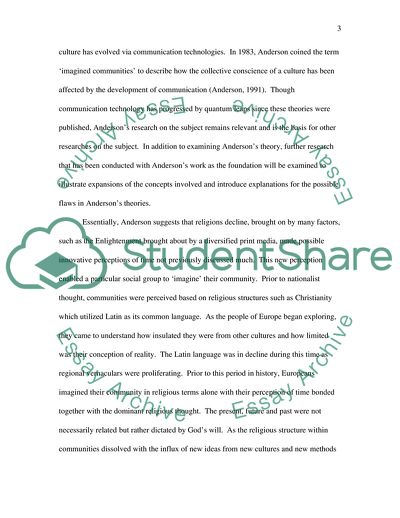Cite this document
(Modernity and Anderson's Concept of the Imagined Community Assignment, n.d.)
Modernity and Anderson's Concept of the Imagined Community Assignment. https://studentshare.org/sociology/1705357-what-is-the-relationship-between-modernity-and-andersons-concept-of-the-imagined-community
Modernity and Anderson's Concept of the Imagined Community Assignment. https://studentshare.org/sociology/1705357-what-is-the-relationship-between-modernity-and-andersons-concept-of-the-imagined-community
(Modernity and Anderson'S Concept of the Imagined Community Assignment)
Modernity and Anderson'S Concept of the Imagined Community Assignment. https://studentshare.org/sociology/1705357-what-is-the-relationship-between-modernity-and-andersons-concept-of-the-imagined-community.
Modernity and Anderson'S Concept of the Imagined Community Assignment. https://studentshare.org/sociology/1705357-what-is-the-relationship-between-modernity-and-andersons-concept-of-the-imagined-community.
“Modernity and Anderson'S Concept of the Imagined Community Assignment”. https://studentshare.org/sociology/1705357-what-is-the-relationship-between-modernity-and-andersons-concept-of-the-imagined-community.


